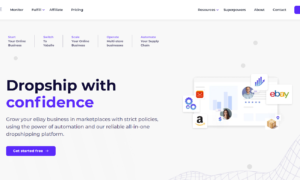By Emre Baran, Co-Founder & CEO, Cerbos
In the rapidly evolving landscape of digital security, the ability to meticulously manage and monitor access is more crucial than ever before. As the digital realm becomes more interconnected and sophisticated, exponentially growing threats make breaches not just a possibility but an impending reality for those not adequately protected. At the heart of this safeguard is not just recognizing who a user is but strictly defining and overseeing what they can and cannot access.
This is where Authorization comes into play, emerging as a linchpin in today’s advanced technological frameworks. Authorization APIs not only provide a robust mechanism for control but adapt to the intricate tapestry of modern software designs, particularly with the rise of microservices-based architectures.
Demystifying authorization
Before delving into the world of Authorization APIs, we need to clarify what authorization means. Authorization defines and enforces a user’s rights, ensuring they can only perform actions or access data pertinent to their role. It’s the crucial second step to perform in a software application, following authentication, which verifies a user’s identity.
Consider the dynamics of an e-commerce platform. Sellers, buyers, and administrators each have different roles, and the Authorization API ensures each role accesses only its specific functions. Similarly, in an HR system, while system admins create and manage user roles, they shouldn’t see personal employee data or sanction leaves, a task designated to the HR staff.
The mechanics of authorization APIs
In an era where decoupling and modularity reign supreme, authorization APIs emerge as internal system interfaces. They evaluate and enforce access permissions for authenticated users. Separating authorization from application logic, they shield against unintended consequences of changing business logic on user access rights. Centralizing the authorization logic guarantees uniform implementation of these access rules across all services.
Authorization is a dance of tokens and scopes. Once a user is authenticated, an identity provider (IdP) issues ID and access tokens. The Authorization API verifies these tokens, ensuring user data can be trusted. Following this, it might perform scope checks to evaluate the user’s resource access rights, contingent on their role.
The key pillars of an authorization API:
At their core, authorization APIs comprise of:
Access Control Models:
These lay the foundation. Role-based access control (RBAC) and attribute-based access control (ABAC) dominate the space. RBAC is straightforward, associating permissions with roles. Conversely, ABAC’s attribute-driven approach offers more granularity but demands deeper implementation efforts.
Policy Engine:
Often referred to as the brain of authorization, this component assesses user credentials and determines access based on set compliance rules and policies. It’s the pivotal decision point where access is granted or denied.
Authorization Policy:
Beyond just policy manipulation, this module serves as the rules for the policy engine. It allows for the addition, modification, and deletion of policies, ensuring a centralised hub for policy administration and oversight.
Audit Logging:
It’s not just about documentation but transparency and traceability. This component meticulously logs every policy alteration, access attempt, and more, forming an indispensable trail for both compliance audits and intricate troubleshooting sessions.
Whether it’s API management, microservices, cloud security, or regulatory compliance, Authorization APIs prove invaluable. They enable secure API access, facilitate microservices communication, and safeguard cloud resources. Plus, they’re instrumental in adhering to regulations like GDPR and CCPA, SOC2, ISO27001.
Best Practices when implementing Authorization APIs
In the ever-evolving world of digital security, deploying an Authorization API isn’t the end; it’s crucial to use them judiciously. Adhering to best practices safeguards the system and ensures robust security. Here’s how:
Be Restrictive with Access:
When it comes to granting permissions, adopt a conservative approach. Ensuring the Authorization API remains tight-lipped means you considerably reduce the likelihood of breaches. Employ IP whitelisting to control access, provide minimal information in error messages, meticulously guard sensitive data, and create clear distinctions between access roles to ensure each user interacts only with pertinent data.
Embrace the Principle of Least Privilege:
It’s essential to strike a balance; while you want users to have the resources they need, you don’t want to give away the keys to the kingdom. By only permitting users or services access to precisely what they require, you curtail potential vulnerabilities, ensuring a leaner, more secure environment.
Periodically Audit Policies:
Complacency in security is a ticking time bomb. It’s vital to revisit and assess your access policies regularly. Bringing in third-party audits can give you a fresh perspective; identifying potential weak spots, and ensuring your strategies are both current and robust.
Centralized Authorization APIs not only reflect the evolution of security practices but also embody the shift towards zero-trust models. Their deployment helps software products and infrastructure remain agile, scalable, and robust. It’s more than just a tool; it’s a necessity in today’s tech world. For companies building the next-gen applications, especially in regulated industries, integrating an Authorization API is a must.



































